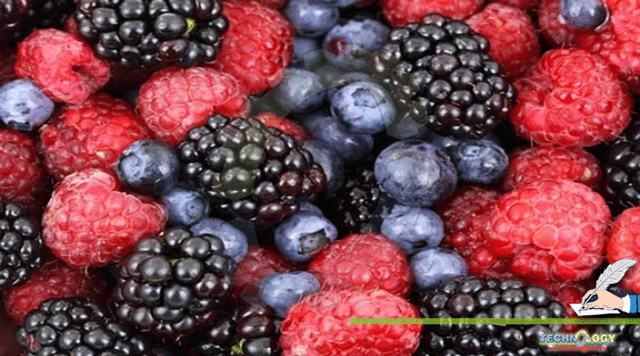Natural colours are preferable. Natural colours are superior goods since they do not include dangerous ingredients. As a result, they are safer and more dependable than chemical dyes.

By: Asma Zafar, Aqeela Saghir
For thousands of years, dyes, particularly natural dyes, have been vital in our lives, providing both aesthetic and practical benefits. Indigo, the oldest and most frequently used dye, has been used in India for four thousand years. Natural dyes come from plants, animals, or minerals. Also, most natural dyes come from biological sources like plants and fungus. Natural dyes were once popular for humans, but synthetic dyes’ ease of use and variety quickly replaced them. We will discuss the importance of natural dyes and why they are making a comeback in today’s society in this article. Benefits of Natural Dyes
First, natural dyes and pigments provide brilliant hues. They are also harmless, nonallergic, and biodegradable. This implies they are better for the environment and people. Natural colour may be extracted from plants, fruits, or flowers. Many natural colours are antibacterial, making them safer for children.
Also, unlike manufactured or synthetic colours, natural dyes do not contain hazardous chemicals or carcinogens. Choosing natural colours over synthetic dyes helps save the environment and reduces human reliance on dangerous items. Because harmful dye runoff and residues from textile manufacture and dyeing frequently find up in our fragile seas, we should use nontoxic natural colours wherever possible.
Moreover, unlike synthetic colours, natural dyes create no waste. This is because plants avoid the whole dye manufacturing process. Another reason natural colours are healthier for the environment. Using natural colours rather as synthetic dyes allows you to connect with nature and appreciate its role in our lives. Natural colours also give better UV absorption in textiles than synthetic dyes. Wearing natural coloured clothing protects your skin from the sun’s damaging rays.
Drawbacks of Natural Dyes
Natural dyes have a few noticeable drawbacks. First, natural dyes are more costly than synthetic colours owing to their origin and production time. Colors may also vary depending on the fruit or flower, and consistency is difficult to attain, particularly across harvest seasons. This makes it difficult to establish a formula for natural dyes since colour development relies on the materials and hue and takes time. Considering their environmental benefits, these small drawbacks are worth it.
Finally, dyed material might fade when exposed to sunlight, perspiration, or air. This happens even with synthetic-coloured materials.
Application
Natural dyes used for a variety of applications. Nontoxic, they are preferred over synthetic colours as food colouring or substrates. They’re also utilised in cosmetics, as pH indicators, and in painting, textiles, and leather production. Finally, natural colours have several advantages for human usage. They are also beneficial for the environment and our health. Natural colours are more costly than synthetic dyes, but their benefits exceed their drawbacks.
Natural Dyes on Textile Applications
Environmentally conscious nations’ stringent textile and garment regulations are reigniting interest in using natural dyes in textile dyeing. Synthetic colours are poisonous and cause allergies, prompting individuals to choose natural dyes. Natural dyes are a sustainable colour supply. It is used in textiles, cuisine, medicine, and handicrafts. The poor bonding of natural dyes to textile fibres necessitates mordanting using metallic mordants, some of which are not eco-friendly. To create 100% eco-friendly fabrics, further study is needed into natural colours and natural fibres.
Natural colours have natural benefits: High sustainability; mild dyeing conditions; easy extraction and purification; renewable sources. Natural dyes have certain technical challenges and drawbacks that limit their use on natural fibres (cotton, linen, wool, and silk): Colorfastness issues; Shade variation; Lack of standard colour formulations and procedures Reliance on non-eco-friendly metals mordants.
Natural food colors
Natural colours are obtained by extracting or processing natural ingredients such as vegetables, tubers, and fruits. Natural colorings have been shown to boost the nutritional content of meals as well as make them more appealing. Green from pandan, rattan plant, bamboo, cudweed, katuk. Red, orange, yellow from gardenia fruits, spiny bitter gourd, turmeric, beetroot. Brown comes from coffee, chocolate, or sugar. Magenta plants yield purple. Black ramie leaves. Because they are made from natural ingredients, they contain antioxidants, anti-inflammatory, anti-cancer, and anti-diabetic vitamins and minerals. Natural colours are healthy, but because they are unstable, you must use a lot to get a good colour. Meanwhile, artificial colours are long-lasting and only a small amount can brighten the dish.
Many restaurants and food manufacturers employ artificial colours to save money. Although these are approved by the Ministry of Health, the potential harm to human health remains. It doesn’t even mention how many unethical companies used toxic artificial colorings.
A unique technique to dye food naturally
Instead of utilising artificial colours, we may readily extract natural colours. For example, pandan may be used to colour cakes, jellies, tea, and other drinks. This natural colour product is resistant to high heat and has a lovely scent. You may also get it from rattan, bamboo, cudweed, and katuk. Brown is a must to make meals appealing. Browning sugar is a common household practise. Brown is found in coffee and chocolate.
Some sweets and sticky rice with red, orange, yellow colours can’t help but mention prickly bitter gourd, whose core offers scarlet and contains many vitamins healthy for the eyes. Turmeric’s yellow colour is utilised in many foods. Turmeric, whether fresh or powdered, is a It also acts as an anti-inflammatory and protects numerous ailments. The black glutinous rice cake is a childhood favourite in the northern countryside. The cake’s black came from ramie leaves. The dried leaves were ground into flour for cooking. Purple or magenta plants are odourless and nontoxic. Fresh magenta plant gives greater purple than magenta plant powder.
Authors: Asma Zafar, Aqeela Saghir. University of agriculture Faisalabad